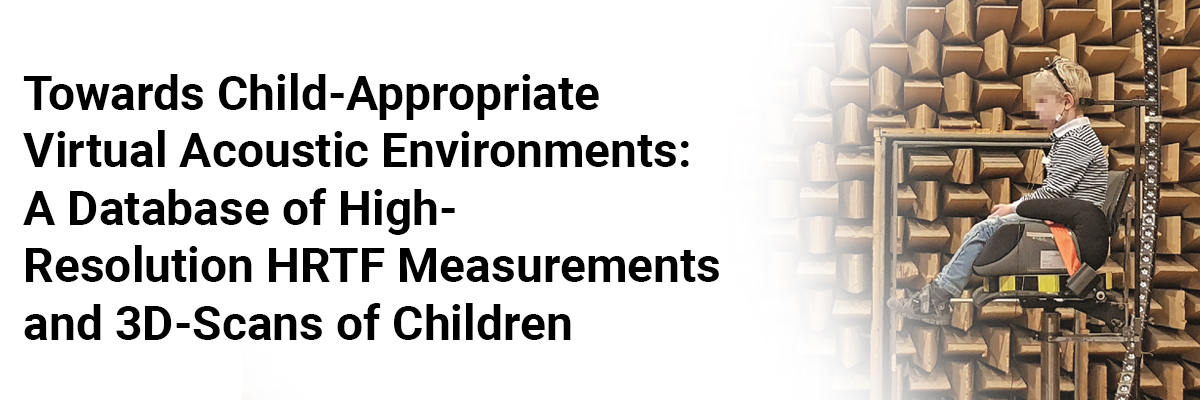
 IJCP Editorial Team
IJCP Editorial Team
Towards Child-Appropriate Virtual Acoustic Environments: A Database of High-Resolution HRTF Measurements and 3D-Scans of Children
The Head-related transfer function (HRTFs) is the Fourier transform of head-related impulse response that characterizes how an ear receives a sound from a point in space. The size and shape of the head, ears, ear canal, density of the head, size and shape of nasal and oral cavities play a vital role in the transformation of sound, boosting some frequencies and attenuating others. HRTFs play a significant role in modern acoustic experiment designs in the auralization of 3-dimensional virtual acoustic environments. Children’s HRTFs differ from adult or standardized artificial heads HRTFs based on adult geometries. While adult HRTF databases are widely available, HRTF measurements of children are not. As a potential alternative, children's 3D head and torso models to calculate individual HRTFs has been established recently. However, data sets of models needed for the calculations are only available from a small number of children or as a highly abstracted average head shape validated through acoustic measurements up to 8 kHz.
The datasets presented in a publication combined both acoustic HRTF measurements and high-resolution 3D models of 23 children as part of an openly available database, with the intention to create a database more representative of the diversity among children. The database contains measured head-related transfer functions (HRTFs) and high-resolution 3D models of 27 children aged 3-10 years. The HRTF measurement occurred in the Hemi anechoic chamber at the Institute for Hearing Technology and Acoustics in Aachen. The continuous HRTF measurement system was used to keep measurement times short, as children tend to move a lot more than adults, especially in longer-duration measurements. The resulting HRTFs have a 5-degree x 5-degree resolution with 360-degree azimuth angles and elevation angles from +90 to -70 degrees. The 3D models were recorded using an Artec Space Spider (Artec 3D, Luxembourg) structured light scanner. They were simplified to reduce file size whilst retaining high accuracy, especially of the pinnae, to allow use in boundary element simulations. Hence, this provides a closer gaze at child-specific HRTFs in the binaural presentation of virtual acoustic environments and in other applications relying on HRTFs, such as hearing aid algorithms, video games, or other hearing-related research in the future.
Source- Braren HS, Fels J. Towards Child-Appropriate Virtual Acoustic Environments: A Database of High-Resolution HRTF Measurements and 3D-Scans of Children. Int J Environ Res Public Health. 2021;19(1):324. Published 2021 Dec 29. doi:10.3390/ijerph19010324

IJCP Editorial Team
Comprising seasoned professionals and experts from the medical field, the IJCP editorial team is dedicated to delivering timely and accurate content and thriving to provide attention-grabbing information for the readers. What sets them apart are their diverse expertise, spanning academia, research, and clinical practice, and their dedication to upholding the highest standards of quality and integrity. With a wealth of experience and a commitment to excellence, the IJCP editorial team strives to provide valuable perspectives, the latest trends, and in-depth analyses across various medical domains, all in a way that keeps you interested and engaged.




















Please login to comment on this article